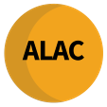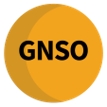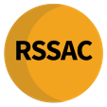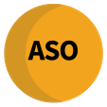Organizational Reviews
Organizational Reviews are anchored in Article 4.4. of the ICANN Bylaws to assess the effectiveness of ICANN’s supporting organizations and advisory committees. Organizational Reviews are conducted by independent examiners to assess:
(i) whether that organization, council or committee has a continuing purpose in the ICANN structure.
(ii) if so, whether any change in structure or operations is desirable to improve its effectiveness.
(iii) whether that organization, council or committee is accountable to its constituencies, stakeholder groups, organizations and other stakeholders.
Here is a listing of the Organizational Reviews and key resources for each:

At-Large Advisory Committee (ALAC) Review

Country Code Names Supporting Organization (ccNSO)

Generic Names Supporting Organization (GNSO)

Nominating Committee (NomCom)

Root Server System Advisory Committee (RSSAC)

Security and Stability Advisory Committee (SSAC)

Address Supporting Organization (ASO)
*Following ICANN Bylaws, Section 4.4(b), and ASO Memorandum of Understanding (MOU) with ICANN, ASO and the Governmental Advisory Committee (GAC) shall provide their own review mechanisms.
Detailed Review Process Flow
Reviews follow a process of many steps and multiple participants. To help make sense of it, we have broken down the process with a visual flow to help you connect the dots. Please click here to understand how Organizational Reviews work.
A substantial amount of work goes into planning each review and implementing the recommendations. As a result, the time it takes to plan, execute, and implement review recommendations can take from 36 to 54 months.
Timing of Organizational Reviews
Organizational Reviews “shall be conducted no less frequently than every five years, based on feasibility as determined by the Board. (see Bylaws, Section 4.4(a)). When appropriate, the Board has the option to defer the start of Organizational Reviews with input from the community. Each five-year cycle will be computed from the moment of the reception by the Board of the final report of the relevant review Working Group.”
The Board took action on 21 June 2021 to defer the third GNSO Review and 12 June 2022 to defer the Organizational Reviews of the ALAC, ASO, ccNSO, NomCom, RSSAC, and SSAC, until such time as the Board, community and ICANN org better understand the impact of the third Accountability and Transparency Review (ATRT3) recommendations on the next Organizational Review cycle, as well as in consideration of the current community workload. See the 21 June 2021 Board resolution here and 12 June 2022 Board resolution here.
